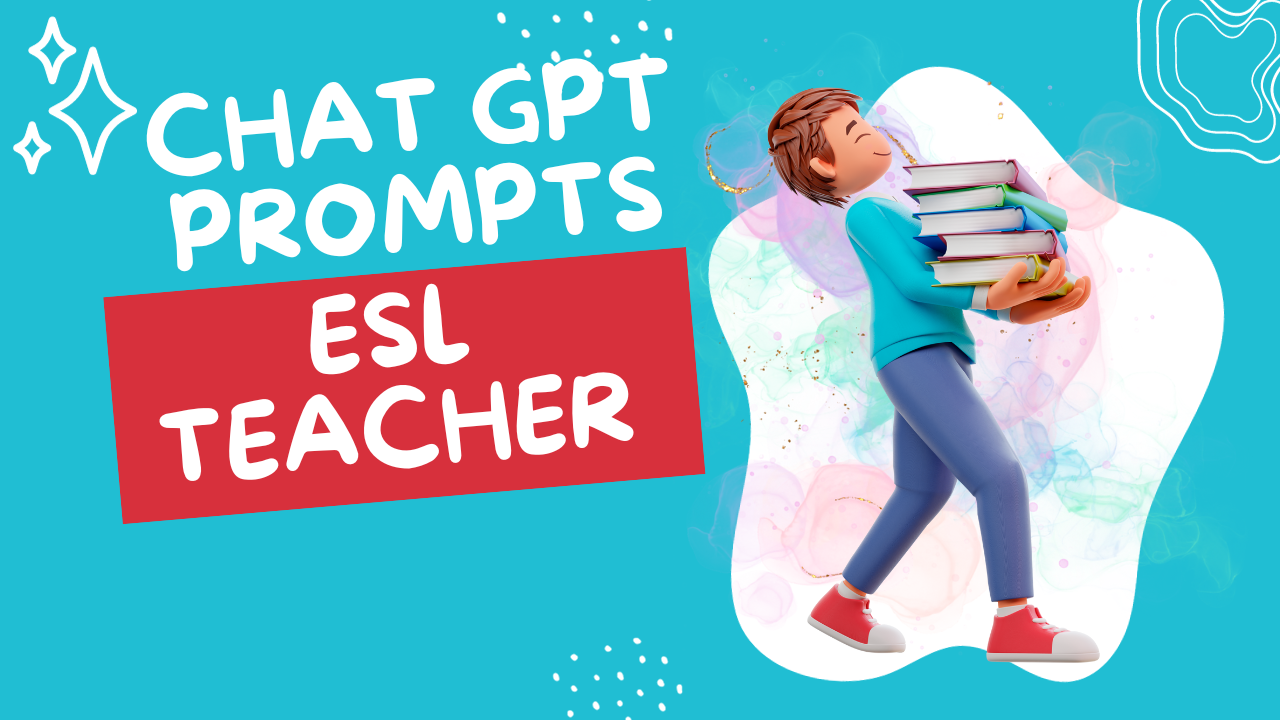Teaching English as a Second Language (ESL) is a rewarding yet challenging journey. How does technology, like Chat GPT, fit into this dynamic landscape? Let’s explore the possibilities and pitfalls of integrating artificial intelligence into ESL classrooms.
What is ESL Teaching
ESL teachers are everyday heroes, guiding students through the intricate maze of language learning. From diverse backgrounds and skill levels, students look to these educators for support. What challenges do ESL teachers face in this diverse environment?
Challenges Faced by ESL Teachers: ESL teachers wear many hats – juggling varied language levels, cultural nuances, and limited resources. The quest for personalized attention clashes with the reality of packed schedules. How can technology lend a hand in this linguistic labyrinth?
The Role of Technology in ESL Teaching:
Enter ChatGPT, a product of artificial intelligence. Sounds fancy, but what can it actually do? ChatGPT engages in real-time conversations, offering a tech-savvy approach to language learning. How might this help ESL students and their dedicated instructors?
Rewards of ChatGPT in ESL Teaching:
- Personalized Learning: ChatGPT tailors its approach to each student, adapting to their unique learning styles.
- Language Practice: Students can practice anytime with ChatGPT, honing their language skills in a user-friendly setting.
- Accessibility: With ChatGPT available 24/7, students can learn at their own pace. But is there a catch?
“Explore these ChatGPT Prompts – Tailored Just for You!”
| ✅ Optimize Your Classroom Experience as a Teahcer’s |
| ✅ Chat GPT Prompts For Math Teahcer’s |
| ✅ Chat GPT Prompts For Students |
Chat GPT Prompts For ESL Teachers
Prompts for Conversation Practice:
Prompt: Initiate a conversation with ChatGPT on a daily life topic. Choose a topic such as:
- [Topic 1]
- [Topic 2]
- [Topic 3]
Prompts for Writing Practice:
Ask students to narrate a personal story and seek ChatGPT’s feedback on sentence structure and coherence by using this command prompt
Prompt: Check This Story[] and providing a feedback on feedback on sentence structure and coherence.
Prompts for Vocabulary Practice:
Use the following Command Prompts for Vocabulary Practice.
Command Prompt
- Request ChatGPT to provide a list of challenging vocabulary words along with their definitions.
- Select a few words from the list that are unfamiliar to you or that you find interesting.
- Ask ChatGPT to generate sentences using each selected word in context to better understand their usage.
- Inquire about any synonyms or antonyms for the chosen words to broaden your vocabulary.
- Reflect on how incorporating these new words into your daily language can enhance your overall communication skills.

Prompts for Pronunciation Practice:
- Prompt: “Utilize ChatGPT to pronounce challenging words or phrases. Have students mimic the pronunciation and seek feedback. How does this technology-assisted pronunciation practice enhance spoken language skills?”
Prompts for Role-Playing:
- Prompt: “Create a role-playing scenario using ChatGPT as a virtual character.
Additional Prompts for Flash Card Generation:
- Prompt: “Ask ChatGPT to generate flashcards for a set of vocabulary words

Additional Prompts for Complete Sentences:
- Prompt: Create 5 UnComplete Sentences with difficulty level [milde, moderate]

Additional Prompts for Guess Word:
- Prompt: “Hi ChatGPT generate clues for a mystery word. “
Can students decipher the word based on these clues?

Certainly! Here’s a suggestion for converting your sentences into a heading:
Exploring the Top 10 Prompts Every ESL Teacher Should Try with ChatGPT
Here are 10 prompts for ESL (English as a Second Language) educators to facilitate language learning and engagement:
- Vocabulary Building:
- “Design a lesson plan for teaching advanced vocabulary related to technology. Include activities that encourage students to use the new words in context.”
- Role-Playing Exercise:
- “Develop a role-playing exercise where students simulate everyday situations, such as ordering food at a restaurant or asking for directions. Provide guidance on language structures and etiquette.”
- Creative Writing Prompt:
- “Encourage students to write a short story using at least five new adjectives. Discuss how incorporating descriptive language enhances their storytelling.”
- Grammar Review Game:
- “Create a game that reinforces grammar concepts, such as verb tenses or prepositions. Make it interactive and enjoyable for students of varying proficiency levels.”
- Real-world Listening Exercise:
- “Compile audio clips of native speakers using colloquial expressions. Design a listening exercise that helps students understand and use these expressions in context.”
- Debating Topic:
- “Choose a thought-provoking topic for a class debate. Guide students in expressing their opinions, providing evidence, and engaging in respectful discourse in English.”
- Cultural Exchange Project:
- “Initiate a cultural exchange project where students research and present information about their home countries. Encourage them to express cultural nuances in English.”
- Interactive Grammar Quiz:
- “Create an interactive online quiz that assesses students’ understanding of a specific grammar concept. Include immediate feedback to reinforce learning.”
- Story Sequencing Exercise:
- “Provide a set of jumbled sentences and have students work in pairs to sequence them into a coherent story. This encourages collaboration and reinforces sentence structure.”
- Interview Practice:
- “Simulate job interview scenarios, guiding students on effective communication, answering common questions, and using appropriate language to express qualifications.”
These prompts cover a range of language skills and teaching methods to keep ESL educators’ lessons dynamic and engaging.
- 35 ChatGPT Prompts for Effective Resume Writing - 27 December 2023
- ChatGPT’s Power for Creative Writing: A Spark for Your Inner Muse - 23 December 2023
- The Role of Chat GPT in Enhancing Programming and Development Workflows - 21 December 2023
